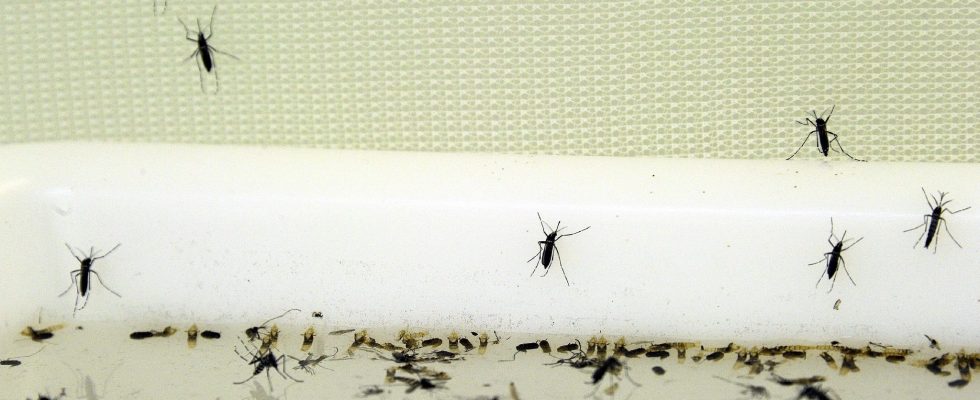Tiger mosquito season is well underway. The presence of this insect, which carries serious diseases, has inexorably spread in France in recent years, with 71 departments colonized last summer, ten times more than in 2010. Placed under reinforced surveillance in France, the presence of the ‘Aedes albopictus (its scientific name) has been scrutinized by the health authorities since May 1 and until November 30. Because the Tiger mosquito could prove to be more dangerous this year than the previous ones, according to a new study by the Pasteur Institute.
We must also expect in the years to come, an increase in cases of dengue fever, Zika and chikungunya, had already warned the Committee for monitoring and anticipating health risks (Covars), the former scientific council at the end of April . Viral diseases which “could become public health problems”. In mainland France, no serious form of the disease has been observed to date, unlike the overseas territories where populations are repeatedly exposed.
Travel and global warming
Who says more tiger mosquitoes, says more chances of infections. Its expansion is inevitable, mainly due to increased travel and climate change, scientists say. “It is an urban insect, which travels in cars and lays its eggs in water collections. It loves human blood, which in the city is not lacking”, explains entomologist Didier Fontenille. The forthcoming organization of major international sporting events in mainland France, such as the 2024 Olympic Games, which will cause significant migration of populations from all over the world, could increase these risks.
Rising temperatures have indirect effects on mosquito growth: the hotter it is, the shorter the mosquito’s development cycle. The speed of multiplication of the virus inside the insect is also increased. For several years, the metropolis has already recorded a growing number of autochthonous cases (that is to say not from contamination outside the territory) and outbreaks of these viruses. In 2022, it was the source of 65 “indigenous cases” of dengue fever (that is to say not from contamination outside the territory), concentrated in the south of France. For the time being, no indigenous case has been detected since the start of the 2023 season.
New diseases carried by mosquitoes?
According to a study by researchers from the Institut Pasteur, from the University of Reims Champagne-Ardenne and the Institute of Parasitology and Tropical Pathology of Strasbourg published on June 6, the mosquito could this year carry new threats: two viruses, named the West Nile and Usutu. The West Nile virus had been detected in the Camargue as early as the 1960s, while the Usutu virus was reported in 2015 in eastern France. But this study carried out as part of a surveillance in the Grand-Est shows that the tiger mosquito, present in almost 3/4 of the territory, is now capable of transporting it and transmitting it to humans.
The first, also called West Nile virus, was first detected in Uganda in 1937 and has since been responsible for epidemics in Africa, the Middle East, West Asia and Europe. In rare cases, it can be the cause of neurological damage (meningitis, encephalitis and meningoencephalitis) which make it serious. The Usutu virus, also detected in Africa, can also cause neurological disorders in immunocompromised people.
If France has a surveillance, detection and management system for these diseases considered “efficient”, it remains “improvable”, in particular in mainland France, estimated Covars in its report. Lack in particular a “national coordination” to be informed of the situation of other regions. “We are not in a disaster scenario, but we must take the risk seriously through prevention campaigns or better organization of the actors”, concluded the president of Covars, Brigitte Autran.
